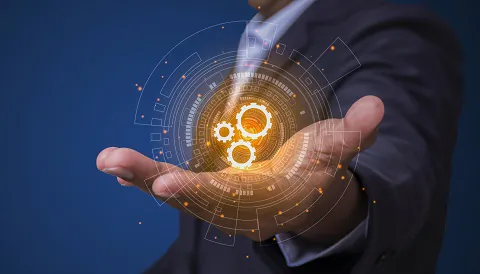Quantzig has been leading the AI-Driven Data Engineering domain, offering tailored Data Infrastructure Solutions that maximize ROI, generate insights, reduce technical debt, and accelerate go-to-market times. With a deep understanding of Cloud Data Engineering Services, Data Engineering Platforms, ETL Automation Services, and Data Integration Services, Quantzig delivers scalable, high-impact data platforms that drive intelligent decision-making and innovation. Our expertise in Machine Learning Data Engineering and Data Warehousing Services ensures seamless data management and actionable insights, positioning clients for success in a data-driven world. We also provide Real-Time Data Processing Services, Data Pipelines Optimization, and Data Observability Solutions.
Quantzig specializes in crafting future-proof cloud strategies using cloud engineering advisory, multi-cloud expertise, and data platforms. We align cloud strategy with business goals, optimizing performance, scalability, and data investments while addressing data challenges.
Learn more about Cloud Strategy Roadmap DevelopmentQuantzig excels in AI/ML Engineering, leveraging AI platforms and digital accelerators to enhance innovation and efficiency. We specialize in predictive systems, data strategy, and management to deliver actionable insights and drive sustainable growth.
Learn more about AI/ML EngineeringQuantzig specializes in Data Lake & Warehouse Development, using data engineering and warehousing expertise. Our platform modernization accelerators, connectors, pipelines, and automated ingestion ensure seamless integration, addressing data risks and ensuring effective management.
Learn more about Data Lake & Warehouse DevelopmentQuantzig ensures data integrity by prioritizing Data Quality & Governance. Our expertise in frameworks, management strategies, and AI platforms continuously monitors and improves data, ensuring accuracy, security, and regulatory compliance.
Learn more about Data Quality & GovernanceQuantzig leverages cloud engineering advisory, strategy services, and DataOps to ensure seamless cloud migration. Our approach includes data platform modernization, predictive systems, and data strategy to optimize infrastructure and enhance enterprise data management.
Learn more about Cloud Engineering & Data MigrationQuantzig’s Data Pipeline Management ensures efficient data flow by leveraging data engineering best practices, automated ingestion, and data platforms. Our focus on data governance and organization ensures compliance and delivers actionable insights.
Learn more about Data Pipeline ManagementAt Quantzig, we stand for exceptional ROI on your Cloud Data Engineering Services through our unique blend of domain expertise and technical acumen. Our approach ensures zero technical debt by leveraging data governance, operationalizing Data Mesh Architecture, and applying data strategy principles. Our Data Engineering Platforms and Big Data Engineering Providers streamline data engineering while enhancing data management practices. With our AI/ML platforms, ETL Automation Services, and Data Pipelines Optimization, we provide rapid data-related solutions that align with multi-cloud strategy and data and analytics initiatives. Our Data Infrastructure Solutions, Data Engineering for AI Applications, Real-Time Data Processing Services, Data Warehousing Services, and Data Observability Solutions ensure high-impact results while supporting Scalable Data Engineering Platforms that drive intelligent decision-making.

Explore how organizations are eliminating bad data, embracing real-time automated actions driven by AI, and making critical insights effortlessly accessible to decision-makers. Unlike the earlier waves, this revolution addresses the pitfalls of technical debt, ensuring data ROI and enabling swift, accurate, and strategic decision-making. Join us in reshaping the future of data engineering – download our guide today and embark on a transformative journey.
Download Now